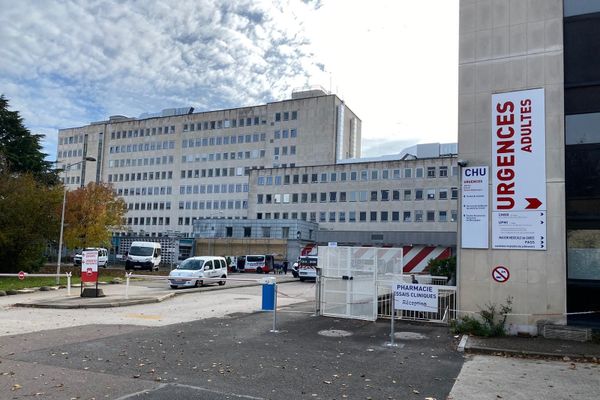Dijon François Mitterrand CHU is carrying out a medical transfer of intensive care patients this Friday, November 13 to Strasbourg CHU.
–
The number of patients in intensive care having increased at the beginning of the week, the Dijon hospital decided, in coordination with the ARS Grand-Est, to carry out patient transfers.
Ambulance transfers
Yesterday Thursday, November 12 already 4 patients were transferred to the Nancy University Hospital, 2 patients from Dijon and 2 from Besançon.
Friday, November 13, 2 patients from Dijon University Hospital, 1 from Auxerre hospital and 1 from Mâcon hospital, who are transferred to Strasbourg University Hospital.
Doctor Hervé Roy, deputy head of service at center 15 (SAMU) in Dijon, specifies: “We were almost saturated in the middle of the week with intensive care patients. We decided to transfer patients to the ARS Grand-Est.”
“The SMUR teams ensure the transfer, the Dijon SMUR, that of Chalon, and a Civil Security helicopter came to transfer the patient from Auxerre.”

A regulatory doctor at Center 15 (SAMU) in Dijon
•
© FTV Coline Chauffard
–
Who are these Covid-19 patients? Dr. Roy describes the patient profile: “These are stabilized patients, but in serious condition. They are on a ventilator, they are sedated with drugs, so they are asleep. The foreseeable duration of resuscitation is still important, that’s why we transferred them. . “
“These are the first patients from Bourgogne-Franche-Comté who are transferred outside the region.”
Are there going to be other transferred patients?
As other regions are also seriously affected by the number of patients in intensive care, including the Auvergne-Rhône-Alpes region, there are trade-offs, as Dr Roy explains:
“We study the figures twice a day, the number of patients in intensive care. If we detect an increase, we will be called on to make other transfers next week. We do not know to which destination, everything will depend on national coordination which distributes patients evenly over the territory. “
Compared to the current trend in the number of cases in intensive care, Dr Roy’s perception is as follows:
“It feels like we’re on top of the wave, we might have tickets over the weekend, in which case we might have to transfer again.”
Doctor Roy justifies the use of the transfer of patients by exceeding the capacity of the intensive care units:
“Initially, each hospital increased its resuscitation possibilities. This is the case at Dijon University Hospital, we increased our resuscitation capacities by 40% compared to the usual capacities. Despite this increase, we reached a 90 to 95% fill rate, that’s where the decision was made to make these transfers. “


The emergency room at Dijon University Hospital (illustrative image)
•
© FTV Coline Chauffard
–
Who coordinates the transfers?
A “transfer cell”, coordinated by ARS Bourgogne-Franche-Comté, in which resuscitators and emergency physicians from Bourgogne and Franche-Comté participate, meets twice a day.
This unit brings together all the resuscitation capacities, and in view of the capacities, “We decide whether or not to transfer patients. We have already done a lot of intra-regional transfers.”, says Dr. Roy.
The resuscitator Sébastien Mirek from Dijon University Hospital tweeted about this operation this morning
Tomorrow I will medicalize a transfer of patients #COVID from #reanimation du CHU #Dijon for the @CHRUStrasbourg
A great collaboration between establishments of #health in the fight against the epidemic https://t.co/doe1w3HYYT— Sebastien Mirek (@SebastienMirek) November 12, 2020
The transfer strategy
During last spring, the transfer strategy had already worked during the first confinement: around fifty patients had been transferred to the Auvergne-Rhône-Alpes and Provence-Alpes-Côte-d’Azur regions.
As Dr Roy reminds us, this strategy is essential in the current health crisis: “This makes it possible to take care of the patients in the correct conditions. We use the resuscitation places available for these patients, in order to allow them the best care.”
He wants to be reassuring about the conditions of transfer of patients: “It is the resuscitators who select the most stable patients, there is little risk.”
He adds that the link with the families is made before any transfer decision: “This is done with the agreement of the families, they are informed of the difficult conditions. The transfer is only done with the agreement of the families. Aids are put in place to facilitate the access of families to patients.”
–


